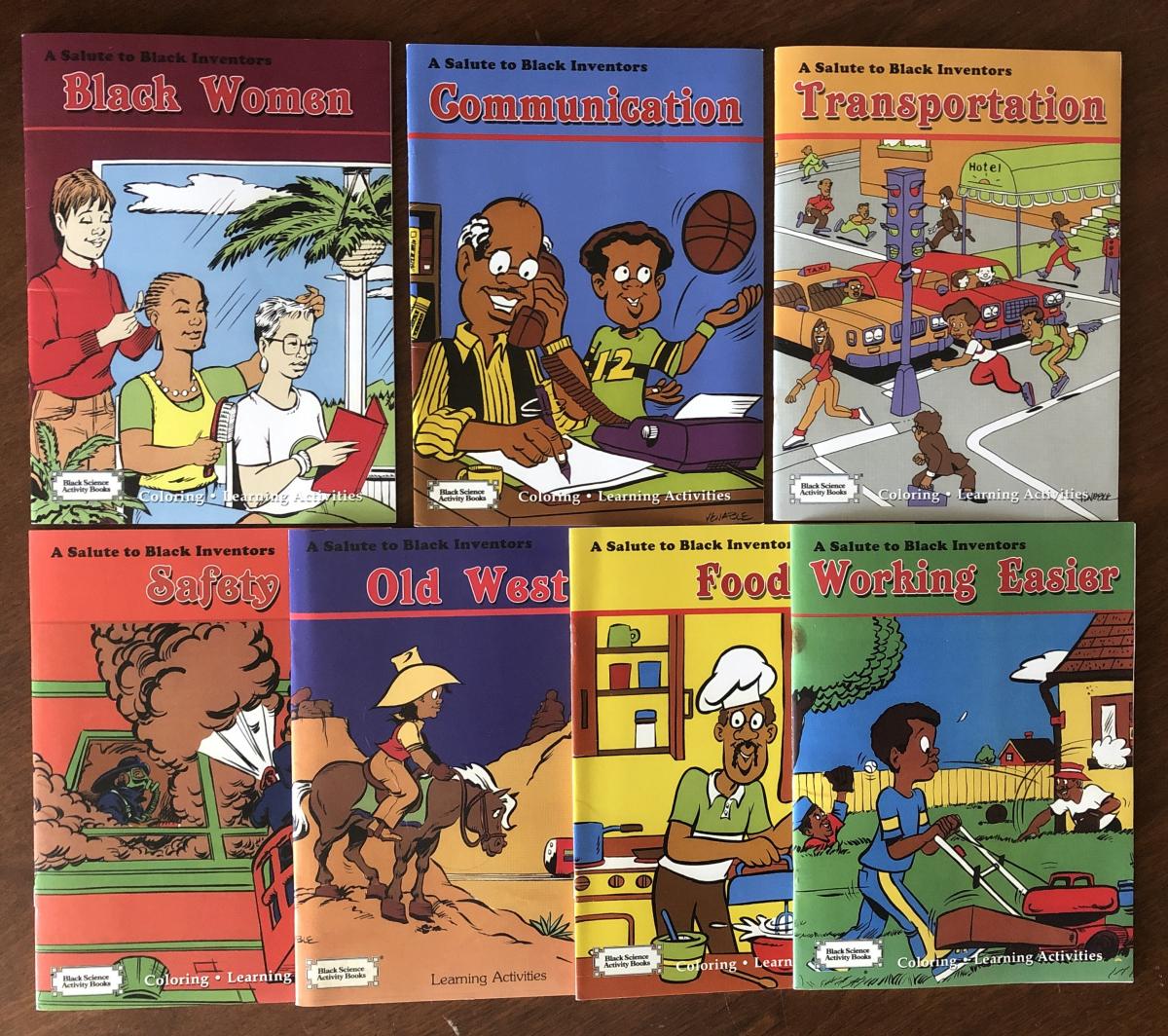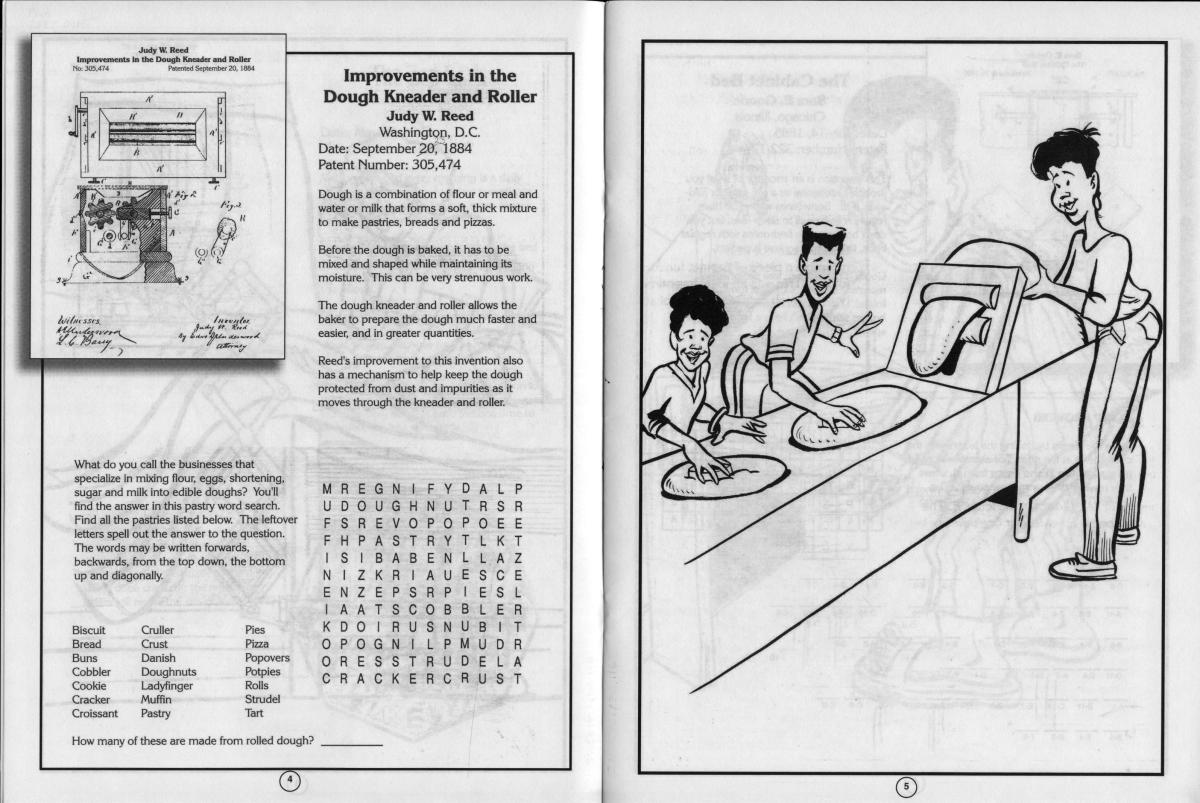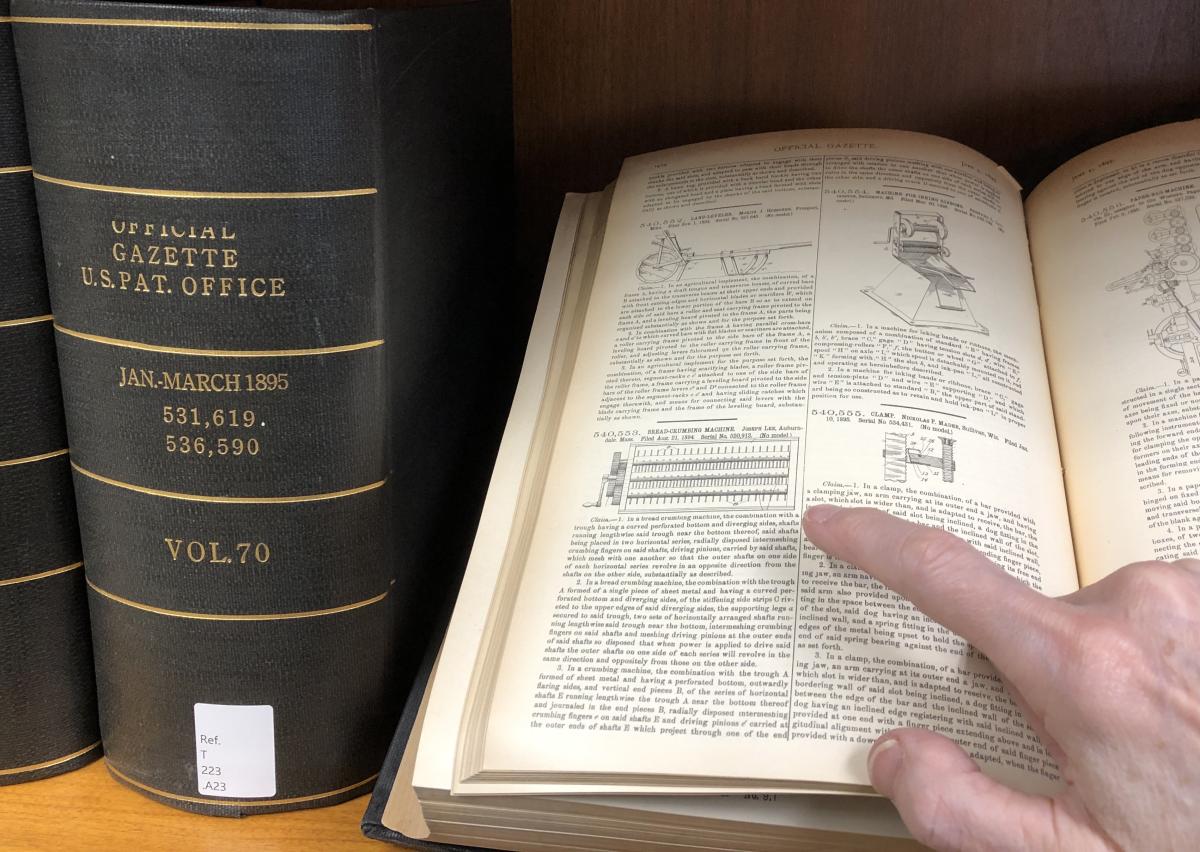As primary sources of information on new ideas, patents offer inquiring minds an immediate connection with an historic act of discovery. We are pleased to announce recent acquisitions that use documents from the United States Patent and Trademark Office to illuminate the legacy of Black inventors in America. Seven of the Black Science Activity Books come to Hagley from Chandler/White, a self-described minority publishing company. Created in the interest of middle school children, this series salutes Black recipients of U.S. patents and presents facsimile sketches of their inventions. Published in 1986, each volume covers a specific theme: Black women, communication, food, the Old West, safety, transportation, and working easier.

One profile describes “Improvements in the Dough Kneader and Roller,” Patent No. 305,474 granted in 1884 to Judy W. Reed (1826-1905). Born into slavery, Reed lived in Washington, DC after emancipation and became one of the first African American women ever to earn a U.S. patent for her intellectual property. Another entry relates to a “Kneading Machine” under Patent No. 524,042 in 1894, the first of several patents for kitchen technology issued to Joseph Lee (1849-1908). The son of enslaved people, Lee educated and advanced himself to prominence as an executive chef and hotelier in Massachusetts. Such stories of ingenuity stir the imagination with new possibilities of self-actualization.

The word “patent” comes to English from Latin, meaning “to be open for public inspection.” With its earliest statute in 1790, American patent law placed a unique demand on the applicant: the submission of a scale model in addition to a written specification. Although the USPTO no longer requires a patent model, the process of opening one’s proprietary secret for public perusal continues to hold a mutual benefit. The patentee secures exclusive rights to grow his or her brainchild for a limited time (20 years for a utility patent, 15 years for design patent, or 20 years for plant patent) and meanwhile, the general population gains the freedom to scrutinize it.
Obtaining a patent, and maintaining its full force once granted, call for a thorough search of the published record. To support this effort, the USPTO sustains a network of Patent and Trademark Resource Centers throughout the United States. In our state, the service is provided through the University of Delaware and at Hagley, we collect a modest share of USPTO works. Now on display in our lobby are volumes 1-93 (1872-1900) of the Official Gazette of the United States Patent Office. We invite visitors to our rotating exhibit of 19th Century patent models to explore the tomes on site and others to access them online.

Alice Hanes is the Technical Services Librarian at Hagley Museum and Library.
